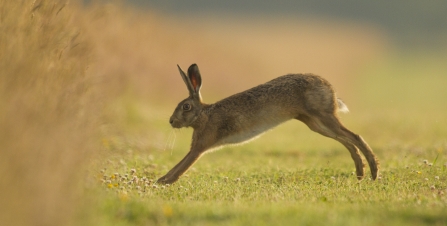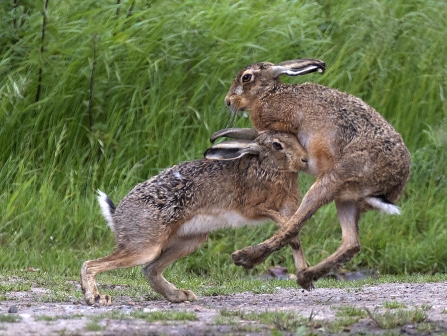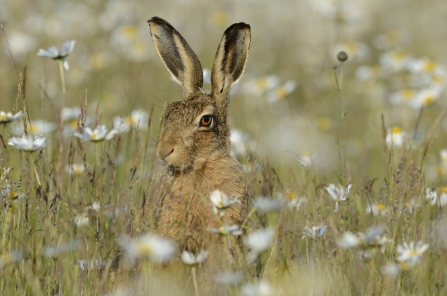Our brown hares have spent the last few weeks seeking out new liaisons. The large ears tipped with black and the long back legs are the tell-tale signs that distinguish them from the rabbit.
Mad March hares
Hare at North Cliffe Woods © John Broadley

Common hare © Russell Savory
Males dutifully follow their female cohorts across the fields and sparring erupts periodically as a prelude to mating. For many years it was thought the 'boxing' was between rival males, but it is now known that the female is fending off the unwanted attention of a prospective male suitor.

Mad March hares © Russell Savory
By the end of April the first young hares, known as leverets, will be lying motionless in a scrape in the soil. They will remain there until their mother calls them for a feed. She returns to feed them at night time, staying for only for a short time before leaving again. They are born fully furred and their eyes open, able to walk to hide away from predators.
At around three weeks old the leveret will be feeding on grass and other plants and largely independent. Relying on highly tuned senses to detect danger, they can reach full speed at the blink of an eye. Adult hares can reach speeds of up to 40 miles an hour and are able to change direction at ease, zig zagging away across the open field.

Brown hare © David Tipling/2020VISION
Hares are most active at night and it is this, aligned with their secretive behaviour that has led to the superstition and intrigue that surrounds them. Early pagan references are linked to celebrations at the arrival of spring, when hares are more commonly seen during the daytime.
Numbers of brown hare have fluctuated over the centuries and today the East of England is their stronghold, but overall numbers have recently started to decline here too. They are totally attuned and adapted to their environment and an encounter with a mad March hare is a sight of wonder and one to hold long in the memory.

